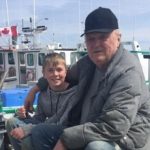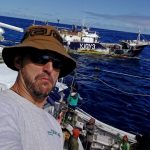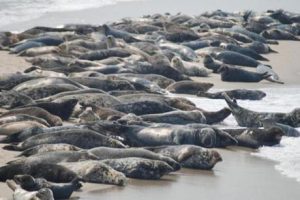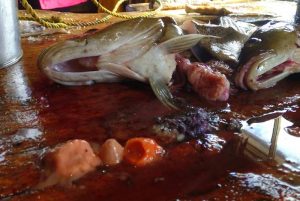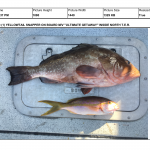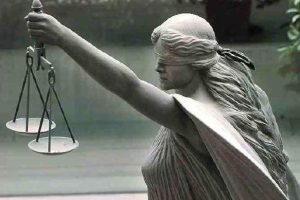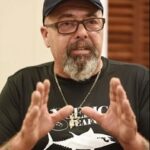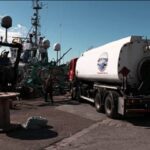Search Results for: Orin C
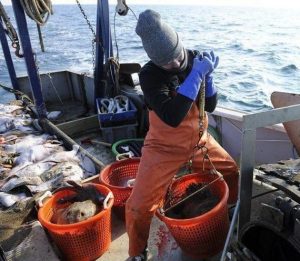
Federal government to increase at-sea monitoring to 100%.
At-sea monitors are workers who collect data on board commercial fishing boats to help inform regulations and management of species. The government approved the new, higher percentage of trip cover on Tuesday, said Michael Pentony, regional administrator with NOAA’s Greater Atlantic Regional Fisheries Office in Gloucester. The rules apply to valuable species that are harvested in the Northeast such as cod, haddock and flounder. Pentony said the new rules will replace the old process of calculating a target for the level of monitoring coverage every year. The coverage target will instead be 100% for four years as long as federal funding can support agency and industry costs, he wrote in a letter to fishery managers. >click to read< 16:24
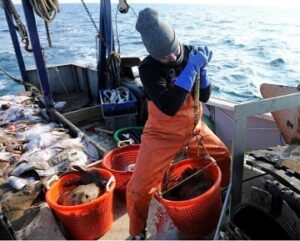
Rule change calls for monitoring of all groundfish trips – Not everyone is on board.
The most significant proposed change is a monitoring coverage target of 100% aboard eligible trips, which is higher than present monitoring levels. The change is meant to remove uncertainty surrounding catch. This and other changes, known as Amendment 23, to the Northeast Multispecies Fishery Management Plan were developed by the New England Fishery Management Council. According to a NOAA Fisheries fact sheet, the changes, if approved by NOAA Fisheries, would give groundfish vessels the choice of a human observer or using one of two types of electronic monitoring to meet the increased monitoring requirements, provided the sector has a corresponding approved monitoring plan and a contract with an approved service provider. >click to read< 12:37
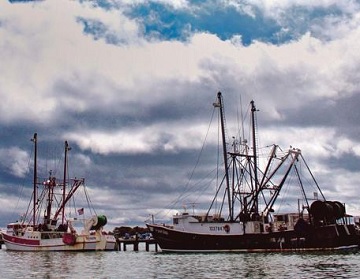
Maryland reps exploring shrimp fishery
A new shrimp fishery could be coming to Maryland, which would have direct benefits along the lower Eastern Shore. Last year, the state’s General Assembly approved legislation that allows the Department of Natural Resources to establish parameters for a shrimp fishery “pilot program” for certain commercial licenses. During the ensuing year, there has been some confusion about just how DNR could and should extend such authority, leading to twin bills in the Senate and House this year intending to clarify DNR’s roles and powers to adopt regulations. “A lot of people don’t realize there’s even a shrimp industry in Maryland,” >click to read< 10:36
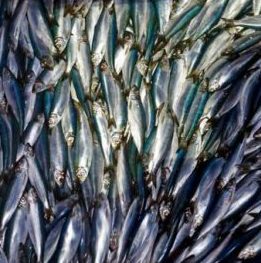
Fishermen sue to end industry funded monitoring program
A group of fishing companies in New England is bringing its bid to try to end industry-funded monitoring programs to federal appeals court. The companies are part of the industry that harvests Atlantic herring, which are heavily fished off the East Coast. The federal government requires herring fishing boats to participate in, and pay for, at-sea monitoring programs. >click to read< 13:30
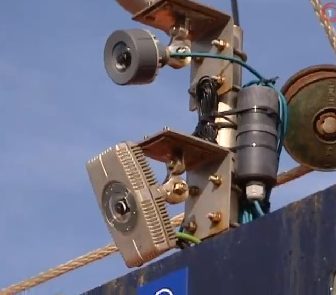
Electronic Monitoring: Hearings set for new electronic lobster boat tracking rules
An arm of the Atlantic States Marine Fisheries Commission is considering implementing the tracking requirements for lobster and Jonah crab boats that have federal permits. A Jan. 19 hearing will be held via webinar and in person at the Urban Forestry Center in Portsmouth, New Hampshire. The other hearings will be held virtually. Others are slated for mid-Atlantic states, Maine and Massachusetts and Rhode Island. >click to read< 16:15
Electronic Monitoring: Who Gets to Use Our Oceans?
Much of the current effort to create coordinated planning for use of our oceans started in 2010, when President Obama issued an executive order that called for the development of “coastal and marine spatial plans.” The idea is to figure out where to put things like aquaculture and wind farms without harming other things such as fisheries. In early August, the ASMFC announced that it’s considering a plan to require electronic tracking devices on federally permitted vessels that operate in American lobster and Jonah crab fisheries. Most of the lobster fishermen to be impacted are in Maine, and while they’ve expected the tracking plan to go into motion for some time now, Porter says, “there will be some seriously pissed-off lobstermen when this actually hits the ground.” >click to read< 09:21
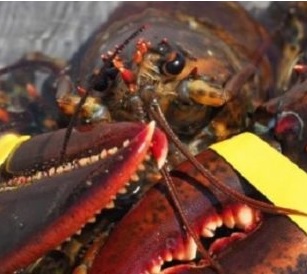
Chiefs in N.B. say DFO officers ignoring fishing rights
Indigenous chiefs in New Brunswick say the federal Fisheries Department is preventing members of the St. Mary’s First Nation from feeding their families after officers last week seized a lobster fishing boat operating in the Bay of Fundy. Canada is ignoring Indigenous rights to fish for food, social and ceremonial purposes and to a livelihood fishery, the six chiefs of the Wolastoqey Nation said Wednesday in a news release. “St. Mary’s First Nation members are being prevented from feeding their families by DFO enforcement, and at the same time DFO seems intent on escalating the situation,” the chiefs wrote. “This is creating dangerous conditions for everyone on the water.” >click to read< 12:06

Electronic Monitoring of the Lobster fishery, Tracking of the Red Shrimp fishery to be imposed
America’s lobster fishing businesses could be subjected to electronic tracking requirements to try to protect vulnerable right whales and get a better idea of the population of the valuable crustaceans. The fishery has collapsed in southern New England, however. Fishermen from New York, Connecticut and Rhode Island were once a significant part of the fishery,,, >click to read<…The American red-spotted shrimp fishery may be subject to electronic tracking requirements to protect vulnerable right whales and better understand precious crustacean populations. However, fishing has collapsed in southern New England. Fishermen in New York, Connecticut, and Rhode Island used to be an important part of the fishing industry, Starks said, but the stock of red-spotted shrimp in southern New England is now depleted. Scientists have linked the collapse of fishing in southern New England to warming seawater. >click to read< 10:50
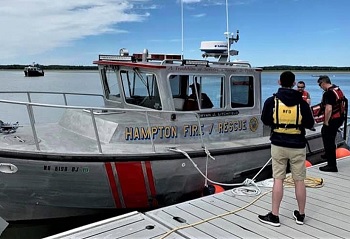
A Fisherman clung onto mooring ball in Hampton Harbor for an hour and a half this morning
A fisherman who ended up in the ocean water at Hampton Harbor while transitioning from his skiff to his vessel was clinging to a mooring ball during an outgoing tide when he was rescued by firefighters early Monday morning. Hampton Fire Chief Michael McMahon said the man was a crew member on a fishing boat and his skiff got away from him. Emergency rescue crews were called to the scene at 1:38 a.m. >click to read< 14:08
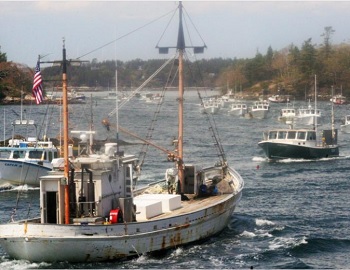
Honoring the life of a fisherman
Sunday’s memorial boat parade in honor of Donald Brewer Sr. The procession was led by Brewer’s son, Maynard Brewer, who captained the Sherm & Jake, which was named for two of Brewer’s grandsons and towed one of the dories from his stop seining outfit to honor him. Family members watched from the Southport bridge or aboard the Sherm & Jake,,, lots of photos >click to read< 08:58
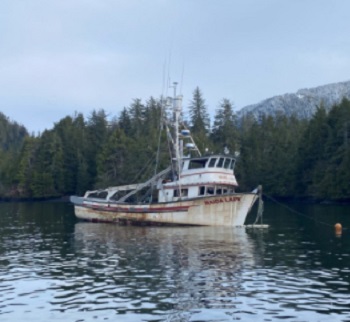
F/V Haida Lady Update: Vessel has been raised, Coast Guard concludes monitoring diesel fuel clean-up near Sitka, Alaska
The fishing vessel, Haida Lady, has been raised with lift bags and dewatering pumps, and is tied off to shore. Approximately 1,550 gallons of diesel fuel and oily water mixture were removed from the vessel’s fuel tanks. An additional 275 gallons of oil products were recovered from the water with the use of absorbents, which included 72 sections of absorbent boom and 1,000 feet of harbor boom was deployed and recovered on-scene. All recovered oil products and the net were transferred to the vessel Eyak,,, photos, >click to read< 18:53
F/V Haida Lady Update: Vessel has been raised, Coast Guard concludes monitoring diesel fuel clean-up near Sitka, Alaska
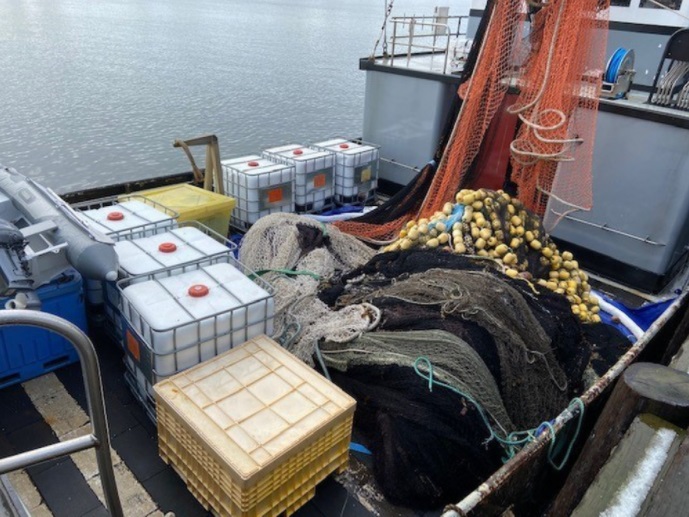 Recovered oil products on board the vessel Eyak near Sitka, Alaska, March 3, 2021. All recovered oil products and the net were transferred to the vessel Eyak and will be properly disposed of.
Recovered oil products on board the vessel Eyak near Sitka, Alaska, March 3, 2021. All recovered oil products and the net were transferred to the vessel Eyak and will be properly disposed of.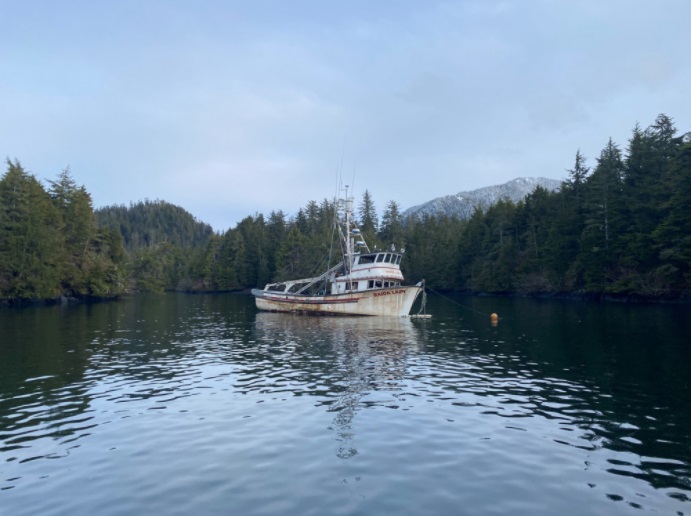 The fishing vessel, Haida Lady, near Sitka Alaska, March 3, 2021. The vessel was raised with lift bags and dewatering pumps after it sank, and is now tied off to shore. Approximately 1,550 gallons of diesel fuel and oily water mixture were removed from the vessel’s fuel tanks mitigating the substantial threat of pollution.
The fishing vessel, Haida Lady, near Sitka Alaska, March 3, 2021. The vessel was raised with lift bags and dewatering pumps after it sank, and is now tied off to shore. Approximately 1,550 gallons of diesel fuel and oily water mixture were removed from the vessel’s fuel tanks mitigating the substantial threat of pollution.
The vessel, Eyak, recovering the net that was contaminated with fuel from the site of the Haida Lady sank, March 3, 2021, near Sitka, Alaska. All recovered oil products and the net were transferred to the vessel Eyak and will be properly disposed of. – U.S. Coast Guard photo by Marine Safety Detachment Sitka personnel.
JUNEAU, Alaska – The Coast Guard concluded the monitoring of diesel fuel clean-up operations near Sitka, Alaska, Wednesday.
The fishing vessel, Haida Lady, has been raised with lift bags and dewatering pumps, and is tied off to shore. Approximately 1,550 gallons of diesel fuel and oily water mixture were removed from the vessel’s fuel tanks.
An additional 275 gallons of oil products were recovered from the water with the use of absorbents, which included 72 sections of absorbent boom and 1,000 feet of harbor boom was deployed and recovered on-scene.
All recovered oil products and the net were transferred to the vessel Eyak and will be properly disposed of. The contracted oil spill response organization, Hanson Marine, departed the scene after the vessel was tied-off to shore.
Impacts to the environment are unknown at this time. No wildlife was observed within the worksite.
Coast Guard Marine Safety Detachment Sitka will continue to monitor the vessel’s condition and work with the owner to mitigate potential concerns with the Haida Lady.
“After Hanson Maritime removed the fuel from the vessel’s fuel tanks, and removed the oiled fishing net, all significant threats from the Haida Lady have been removed or mitigated,” said Petty Officer 1st Class Brian Wereda, a marine science technician from MSD Sitka. “We will continue to work with the owner and our Port partners to monitor the vessel.”
-USCG-
U.S. Coast Guard 17th District Alaska
Contact: 17th District Public Affairs
Office: (907) 463-2065
After Hours: (907) 209-8731
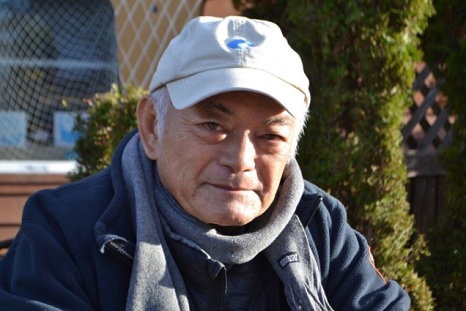
Lifelong Ucluelet fisherman Doug Kimoto shares his thoughts on restoring fisheries
Doug Kimoto’s livelihood begins with a 42-foot commercial salmon troller named ‘La Perouse.’ The wooden fishing vessel has been a member of his Japanese-Canadian family for 70 years. “I started commercial fishing with my father when I was about 13-years-old,” His father, Tom Kimoto, lost about 10 years of his life as a result of being forced into a Canadian Japenese internment camp, Kimoto recalls. “These last few years, it’s been a disaster,” he says. “Years ago you could make a decent living, but now it’s down to what you’d call not even a minimum wage for most fishermen.” >click to read< 07:03

Electronic Monitoring in New Zealand: “not excusable” some skippers are fishing in protected areas
It comes as data obtained under the Official Information Act shows the Ministry for Primary Industries (MPI) is investigating a set netting vessel in the South Island. It alleges it fished in both a dolphin-protected area and a marine reserve. “It’s not excusable at all,” chief executive Dr Jeremy Helson says. “We will work with MPI and the companies to make sure skippers and crew understand their responsibilities.” In December last year, new electronic monitoring rules came into place for 860 commercial fishing vessels, meaning the movements of vessels were tracked by the Ministry for Primary Industries. >click to read< 09:16 – Commercial fishing vessel offences 10-times higher after Ministry for Primary Industries starts tracking location information – >click to read<
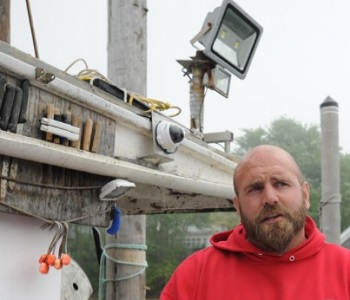
Electronic monitoring long-awaited boon for Cape Cod fishermen
Cape fishermen first started advocating for the use of electronic monitoring in 2006, said Melissa Sanderson, chief operating officer of the Cape Cod Commercial Fishermen’s Alliance. “I would say it’s a long time coming,” said Sanderson of the 14 years it took to finally have approval. But six years ago, Maine fishermen revived interest with their own pilot program and Cape fishermen joined the following year using equipment and technical support provided by The Nature Conservancy and grants from the National Fish and Wildlife Foundation. >click to read< 09:09
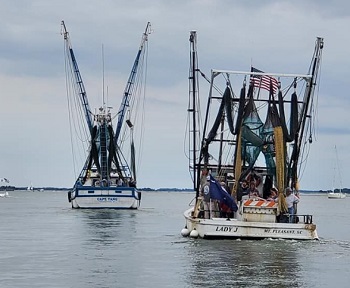
Honoring Captain Wayne Magwood
The Town of Mount Pleasant’s Special Events staff worked with the Magwood family to organize an event to honor the life of Wayne Magwood on Thursday, Oct. 1. Nearly 200 people attended the Celebration of Life ceremony for Magwood at the Mount Pleasant Waterfront Park from 6-7:30 p.m. On Saturday, Oct. 3 the Mount Pleasant shrimp fleet, followed by personal and charter boats, left Shem Creek in a parade in memory of Magwood. A gallery of 52 images is featured, >click to read< 15:47
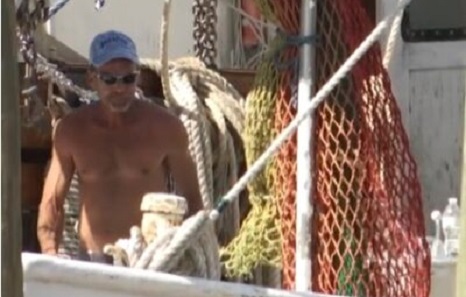
Community gathers for sunset memorial honoring Captain Wayne Magwood
Friends and family gathered on Thursday night to remember the loss of Lowcountry shrimper, Captain Wayne Magwood. Dozens gathered at Mount Pleasant Memorial Waterfront Park to share stories, pray and walk the pier. When the group reached the end of the pier, they dropped flowers into the water. Moving forward, it’s Magwood’s legacy that will keep the community going. A boat parade in his honor is scheduled for this Saturday, October 3rd. Video >Click to read< 07:56
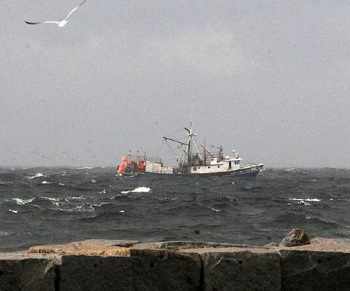
NEFMC votes to set a future target of 100% monitoring coverage on sector based groundfish vessels
The council, deliberating online via webinar on Amendment 23, overwhelmingly approved the motion for its preferred alternative of 100% coverage level for sector vessels in the Northeast Multispecies groundfish fishery. But the motion, crafted through a morning and afternoon of rulemaking on the fly, included a valuable caveat for fishermen: The region’s commercial groundfish harvesters likely won’t have to pay the full costs for the monitoring for the first four years the amendment is in effect or as long as supporting federal funds last. According to the approved measure, the commercial fishing industry will receive federal reimbursements, or money from other federal mechanisms, for 100% of their electronic monitoring costs and 100% of their at-sea monitoring costs in the first four fishing years the amendment is in effect. >click to read< 07:41

NEFMC will vote Sept. 30 on changing requirements for groundfish monitoring, fishermen have mixed responses
Commercial fisherman Randy Cushman walks on top of his boat where he measures fish in front of electronic monitoring cameras, pictured to the right. Cushman is among a handful of New England fishermen who use electronic monitoring instead of a traditional human observer to track what they catch and discard. The New England Fisheries Management Council (NEFMC) is scheduled to vote on changes to its groundfish management plan at a virtual meeting Sept. 30, culminating four years of research. “If we’re going to have accurate stock assessments, we need 100 percent coverage under this management system,” said Cushman. But, the prospect of increased monitoring concerns Terry Alexander, a fisherman who represents Maine on the NEFMC and operates his 62-foot boat out of Massachusetts. >click to read< 10:57

Fishermen, state leaders push back against at-sea monitoring proposal
The New England Fisheries Management Council (NEFMC) is considering Amendment 23 to the Northeast Multispecies Fishery Management Plan (FMP) that would require groundfishing vessels to implement 100% at-sea monitoring or a blended approach of at-sea monitoring and electronic monitoring. The proposed change seeks to improve catch accountability in the fishery, but fishermen argue this particular proposal is overly burdensome and unnecessary to achieve the stated goal,,, Overall, fishermen across Massachusetts fear this proposed policy would incur overly burdensome costs on an already struggling fleet, accelerating the expiration date of the fishery.” >click to read< 11:52
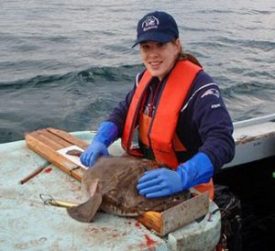
New England Fishery Management Council chooses 100% monitoring option on all groundfish trips
The council, which expects to take final action on the amendment at its meeting in late September and early October, has selected putting monitors on 100% of all groundfish trips as its preferred alternative for accomplishing the goal of the amendment — improving catch accountability, maximizing the value of collected data and minimizing costs. 0% monitoring levels and flatly proclaiming that forcing the industry to pay for 100% monitoring would bring an end to the historic commercial fishery. “The numbers you have up there make no sense to me,” said David Leveille,, “This will accelerate the expiration date of the fishery,” said Al Cottone, longtime Gloucester fisherman and the city’s fisheries director. “Once the federal money (which currently pays for at-sea monitoring) runs out, it’s over.” >click to read< 09:59
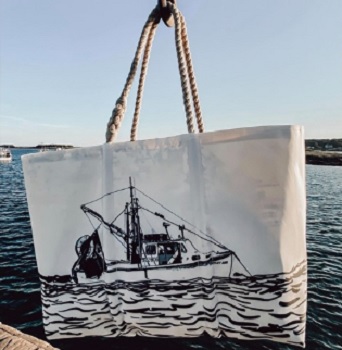
Honoring a legacy: Commemorative tote honors Maine fishermen who died at sea
When Hayley Brown’s father Captain Joe Nickerson died at sea, she said she was in shock. And while the pain of losing her father is still with her, she’s getting creative to honor his legacy and support the causes he was truly passionate about. Nickerson and his crewmate Chris Pinkham were fishing aboard the boat named after Hayley, the Hayley Ann, off the coast of Portland when it capsized in January., Nickerson was the chairman of the Maine Coast Fisherman’s Association (MCFA), so Hayley teamed up with them and Sea Bags to create totes in memory of her father. All proceeds from the sale of the bags will support MCFA in advocating for Maine’s fishing communities and the next generation of fishermen in Maine. On Father’s Day, the MCFA introduced the totes. >Video, click to read< 18:21

Coronavirus: LI fishermen concerned about restart of onboard monitoring program
Some fishermen in Montauk this week said they plan to refuse to allow the federally mandated observers and monitors to board their boats, given the resurgence of COVID-19 around the country and the uncertainty around potential infection from observers, some of whom are housed in Hampton Bays, once considered a Long Island hot spot for the virus. The federal agency ordering the resumption of monitoring said it has enacted a series of safety protocols to protect fishermen and observers, including requiring that observers quarantine for 14 days before the start of a fishing trip. >click to read< 17:14

Family Fishermen Move to Block Industry-Killing At-Sea Monitoring Rule
Cause of Action Institute (CoA Institute) today filed a motion for summary judgement on behalf of a group of New Jersey fishermen, asking a D.C. Federal Court to vacate job-killing fisheries regulations called the “Omnibus Amendment.” CoA Institute filed suit in February to challenge the industry-killing rule, which requires certain boats in the Atlantic herring fishery to carry “at-sea monitors” at their own cost. The Omnibus Amendment—designed by the New England Fishery Management Council (NEFMC) and finalized by the National Oceanic and Atmospheric Administration and the Department of Commerce—is expected to cost fishermen upwards of $700 a day, leading to a projected 20% drop in returns-to-owner (profit). Not only is this industry already overregulated, but the agencies are forcing this unlawful rule upon fisherman without any statutory authority to do so. >click to read< 15:25
Family Fishermen Move to Block Industry-Killing At-Sea Monitoring Rule
Cause of Action Institute (CoA Institute) today filed a motion for summary judgement on behalf of a group of New Jersey fishermen, asking a D.C. Federal Court to vacate job-killing fisheries regulations called the “Omnibus Amendment.” CoA Institute filed suit in February to challenge the industry-killing rule, which requires certain boats in the Atlantic herring fishery to carry “at-sea monitors” at their own cost.
The Omnibus Amendment—designed by the New England Fishery Management Council (NEFMC) and finalized by the National Oceanic and Atmospheric Administration and the Department of Commerce—is expected to cost fishermen upwards of $700 a day, leading to a projected 20% drop in returns-to-owner (profit). Not only is this industry already overregulated, but the agencies are forcing this unlawful rule upon fisherman without any statutory authority to do so. Although the current Administration has recently said that it will take steps to lessen the regulatory burden on fishermen, the Omnibus Amendment is a step in the wrong direction. CoA Institute and the fishermen are asking the Court to declare industry-funding unlawful, enjoin Defendants from pursuing it, and vacate the Omnibus Amendment.
Ryan Mulvey, counsel at Cause of Action Institute: “The federal government finalized this lawless regulation despite lacking any legal authority to require these family fishermen to pay for policing by government-contracted employees. The New England Council and NOAA disregarded their lack of congressional authorization and shirked the necessary statutory and procedural standards. We are hopeful the court will deem industry-funding unlawful and set aside the Omnibus Amendment—helping save one of our nation’s most-storied professions.”
Jeff Kaelin, Director of Sustainability and Government Relations at Lund’s Fisheries, Inc., representative for the Plaintiffs: “Herring fisherman have long worked with the Councils to advance conservation and sustainability measures for the fishery. But the Omnibus Amendment will not advance any of those goals. The over-regulation that plagues this industry has already driven vessels out of business. If boats are forced to take on the additional cost of at-sea monitors, the results for our businesses will be fatal for many, especially small, family-owned firms.”
The implementation of industry-funded monitoring comes during an especially difficult economic period, as parts of the commercial fishing industry across the Eastern seaboard suffer from the economic downturn spurred by COVID-19. Since the outbreak of the pandemic, NOAA has repeatedly delayed implementation of industry funding, both in the herring fishery and others, and waived the requirement to carry an observer through July 1, 2020. The devastating impact of the Omnibus Amendment could not come at a worse time.
The complaint can be viewed HERE. The MSJ can be viewed HERE.
CoA Institute recently wrote a letter to the President thanking him for his recent Executive Order helping the fishing industry and asking him to intervene on coercive fishing regulations. The letter can be viewed HERE.
Plaintiffs are represented by CoA Institute counsels Ryan P. Mulvey and Eric R. Bolinder.
Media Contact: James Valvo, [email protected] | (571) 482-4182
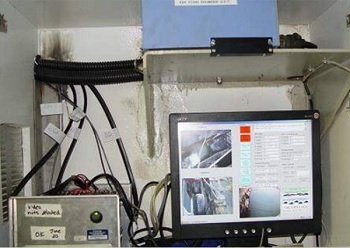
Coronavirus: DFO implements Emergency Electronic Monitoring (EM) Pilot Program to replace at-sea observers
In an April 14 fishery notice, DFO announced that the Emergency Electronic Monitoring (EM) Pilot Program was being implemented in the groundfish trawl fishery “effective immediately,” on the advice of the Groundfish Trawl Advisory Committee (GTAC). The EM pilot program will last for the duration of DFO’s April 2 Fishery Management Order suspending the at-sea observer requirement for 45 days to help protect the health of observers and fishers from the spread of the novel coronavirus. “Comprehensive, independent catch monitoring is an essential component of the groundfish trawl fishery’s management regime,” Girdler said. “In the absence of at-sea observers, EM may fulfill this need for comprehensive, independent catch monitoring on an interim basis.” >click to read< 09:13

Council delays vote on at-sea monitoring
Meeting solely via webinar, council members voted 12-5 to postpone final action on Amendment 23 beyond its June meeting, when it expected initially to vote. The amendment will set at-sea monitoring levels in the Northeast Multispecies groundfish fishery. Many of those voting for the postponement expressed concern that fishermen have enough on their plate managing the economic and social impacts of the pandemic without having to deal with the complexities of the amendment and the need to develop public comment. “My day job is working with commercial groundfishermen and I can assure all of you, when I’m on the phone with them, it’s COVID-19 related, not Amendment 23-related,” said council member Libby Etrie. >click to read< 16:10
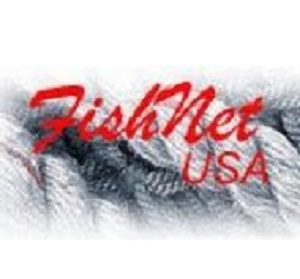
Looking Back with FishNetUSA: The case for Bureaucratic Monitoring Systems (BMSs)
A good friend of mine is a New Jersey gillnetter. An acknowledged highliner, he’s served and continues to serve on several state and regional advisory committees, has always participated in the management process, and has never received a NOVA or been convicted of violating any federal or state fisheries regulations. One requires that he have a Vessel Monitoring System (VMS) operating 24 hours a day, 7 days a week, 52 weeks a year.,, This got me thinking, and one of the things it got me thinking about was all of those bureaucrats paid from the U.S. Treasury.,, So why isn’t the wearing, or perhaps implantation if that is a practical alternative, of Bureaucrat Monitoring Systems (BMSs), required as a condition of public employment? >click to read< 13:19
Looking Back with FishNetUSA: The case for Bureaucratic Monitoring Systems (BMSs)
Nils Stolpe http://fishnet-usa.com/ posted 04/12/2020
The case for Bureaucratic Monitoring Systems (BMSs)
A good friend of mine is a New Jersey gillnetter. An acknowledged highliner, he’s served and continues to serve on several state and regional advisory committees, has always participated in the management process, and has never received a NOVA or been convicted of violating any federal or state fisheries regulations. He’s the kind of fisherman the managers should try to accommodate in every way possible, because he and fishermen like him are the future of the commercial fisheries and the bureaucracy that has grown up around them.
Like every prudent fisherman, he tries to maintain every permit he can. One requires that he have a Vessel Monitoring System (VMS) operating 24 hours a day, 7 days a week, 52 weeks a year. This is so that the enforcement people will know he isn’t fishing in an area seven states away where the use of gillnets or longline gear is seasonally prohibited. The assumption is, as with all commercial fishermen, that he is de facto likely to violate the closed area/season regulations; and the burden is on him to prove he isn’t.
It’s impossible to know his VMS unit is operating correctly without an on-board computer. He doesn’t have one and his unit evidently stopped transmitting. How did he find this out? Not by a phone call from NMFS, or a casual note or email asking that he get the unit checked and repaired (remember that the closed season/area that his boat’s being monitored for is several months and hundreds of miles away). Rather, he received a registered letter that in part read “please be aware the vessel should not return to sea with gillnet, or pelagic/bottom longline gear on board the vessel without first correcting the unit’s reporting problem.” Complying would have cost him perhaps a week’s worth of fishing, but it’s apparent that the feeling in NMFS is that’s a negligible price to pay to be able to prove to The Man that you aren’t breaking any laws or ignoring any regulations.
The justification for this “guilty until proven innocent” philosophy is that harvesting public resources is a privilege, not a right, and that you should be willing to accede to any conditions that “the system” deems appropriate, no matter how onerous they are, for this privilege.
This got me thinking, and one of the things it got me thinking about was all of those bureaucrats paid from the U.S. Treasury. The Treasury would seem to meet the criteria of a “public resource,” wouldn’t it? And, accepting that people are only people, we can assume that bureaucrats are likely to lie, cheat and steal at about the same rate as fishermen.
Hence, wouldn’t it be reasonable, in order to protect us taxpayers who try to keep the Treasury filled, to make it the responsibility of bureaucrats to prove that they are performing their bureaucratic functions where, when and how they are supposed to? While I never kept any kind of tally, it sure seems that more bureaucrats every year are caught with their hands in various illicit cookie jars that are fishermen caught fishing outside the regs. And the potential cost to the public of bureaucratic shenanigans is certainly greater than the cost of any imaginable illegal fishing.
So why isn’t the wearing, or perhaps implantation if that is a practical alternative, of Bureaucrat Monitoring Systems (BMSs), required as a condition of public employment? Perhaps as ankle bracelets a la Martha Stewart, and to be worn 24/7, 364 days a year. Every government job has requirements: hours worked, number and duration of coffee and lunch breaks, number of sick and personal days, etc. With required BMSs, we would know whether a bureaucrat on “sick time” was at home, at the doctors, in a hospital or on the golf course. We would know when a bureaucrat had exceeded the permissible time in the employee lounge or out of the building for lunch. With vital signs monitoring, we would know whether a stationary bureaucrat was at the desk working, nodding off or taking a nap. A bureaucrat would be hard pressed to pass off three days spent on a beach in Bermuda as a family emergency. Were a bureaucrat anywhere but home at 3:00 am on a weeknight, there’s a good chance he or she was engaged in some illegal or immoral activity, with all but guaranteed negative effects on job performance.
And, of course, if a bureaucrat’s BMS was on the fritz, he or she would be required to remain in the office or at the work station until it was operational again. If not, how would we taxpayers know that we were getting our money’s worth?
Now all we need is a federal bureaucracy in which to implement an experimental BMS. Any suggestions?
(in National Fisherman) 11/02/05
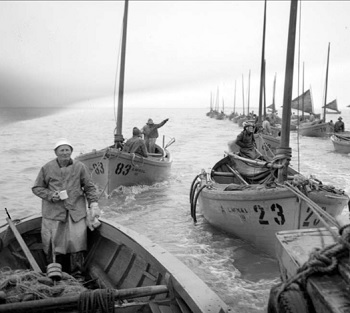
Local maritime organization restoring 114-year-old fishing boat
A remnant of a bygone era of handcrafted boats, it is one of the last of its kind. Between 1884 and 1951, about 8,000 existed. A 1951 law that required motors on commercial fishing boats resulted in the majority of these boats being either converted or burned. Today, fewer than five original vessels remain of the type that Sturgill launched his commercial fishing career on.,, The boat was donated by Seattle-based Trident Seafoods in 2013 to Drayton Harbor Maritime, a non-profit that Richard Sturgill founded with the goal of preserving the maritime history of Drayton Harbor and its surrounding waters. photo’s, >click to read< 08:17



































